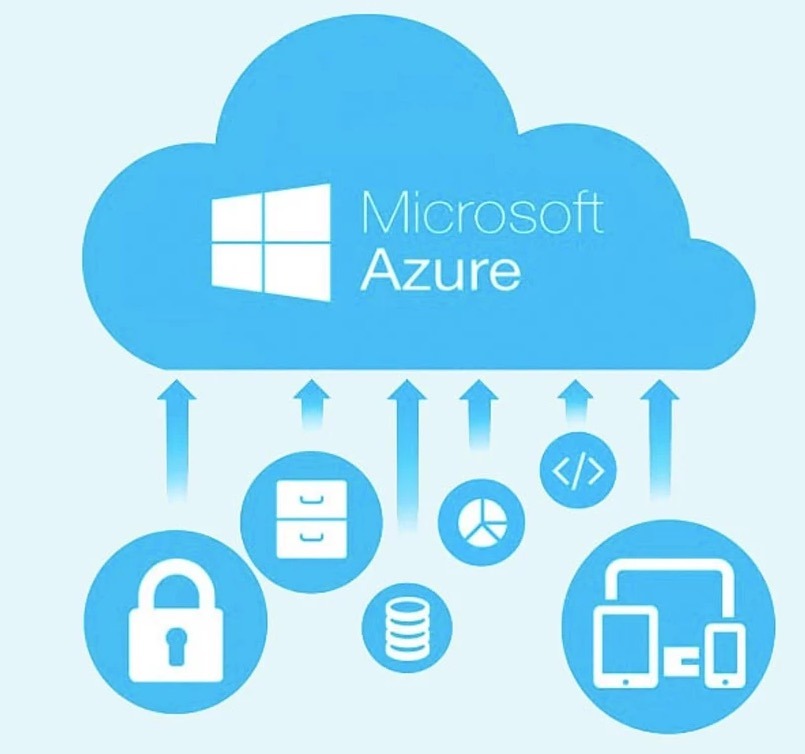Azure Latch Codes: 7 Ultimate Secrets Revealed
Ever wondered what makes Azure Latch Codes such a game-changer in cloud security? These powerful access mechanisms are revolutionizing how developers manage authentication and authorization in Microsoft Azure environments. Let’s dive into the essentials.
What Are Azure Latch Codes?

Azure Latch Codes are specialized security tokens or access patterns used within Microsoft Azure to control access to resources, applications, or services. While not an officially branded term by Microsoft, ‘latch codes’ commonly refer to temporary, time-bound, or conditional access tokens that ‘latch’ onto a user session or service principal, granting access only under specific conditions. These codes are pivotal in zero-trust architectures and conditional access policies.
Definition and Core Concept
The term ‘latch code’ is often used in cybersecurity circles to describe a mechanism that ‘locks’ access until certain conditions are met—like multi-factor authentication (MFA), device compliance, or location verification. In Azure, this translates to dynamic access tokens generated via Azure Active Directory (Azure AD) that act as temporary keys. These codes ‘latch’ onto a session, ensuring that access is granted only when all security checks pass.
- Latch codes are not standalone features but part of broader conditional access frameworks.
- They function as ephemeral access enablers, often invisible to end-users.
- They are tightly integrated with Azure AD, Intune, and Conditional Access policies.
How Azure Latch Codes Differ from Standard Tokens
Unlike traditional OAuth 2.0 or JWT (JSON Web Tokens), Azure Latch Codes are context-aware. They don’t just verify identity—they assess the entire access context. For example, a standard token might grant access if the password is correct, but a latch code will deny access even with the right password if the device is unmanaged or the user is logging in from a high-risk location.
“Security is no longer about perimeter defense—it’s about continuous verification. Latch codes embody this shift.” — Microsoft Security Whitepaper, 2023
This contextual intelligence makes latch codes far more resilient against phishing, credential stuffing, and session hijacking attacks.
The Role of Azure Latch Codes in Conditional Access
Conditional Access (CA) is the backbone of modern identity protection in Azure. Latch codes play a critical role in enforcing CA policies by acting as dynamic gatekeepers. When a user attempts to access a resource, Azure evaluates the sign-in risk, device state, location, and other signals. If the policy requires additional verification, a latch code is generated to ‘hold’ the session until compliance is confirmed.
Integration with Azure AD Conditional Access
Azure AD uses latch codes implicitly through its sign-in process. For instance, when a user logs in from an unfamiliar location, Azure may trigger a ‘sign-in frequency’ policy that requires reauthentication. The system generates a temporary latch code that blocks access until the user completes MFA or confirms their identity via the Microsoft Authenticator app.
- Latch codes are triggered by policy violations or risk detections.
- They are short-lived, typically expiring within 15–30 minutes.
- They can be revoked instantly by administrators via the Azure portal.
Learn more about Azure AD Conditional Access at Microsoft’s official documentation.
Real-World Use Cases
Organizations use latch codes in various scenarios:
- Remote Workforce Security: Employees accessing corporate apps from personal devices must pass device compliance checks before a latch code grants access.
- High-Privilege Access: Admins logging into Azure Portal from untrusted networks are blocked until they approve a push notification via Authenticator.
- Automated Workflows: Service principals in CI/CD pipelines use time-bound latch codes to deploy resources without long-lived secrets.
These use cases highlight how latch codes enhance security without sacrificing usability.
How Azure Latch Codes Enhance Security Posture
In an era of escalating cyber threats, Azure Latch Codes provide a robust layer of defense. By enforcing real-time compliance checks, they reduce the attack surface and prevent unauthorized access even if credentials are compromised.
Preventing Unauthorized Access
Latch codes act as a final checkpoint before granting access. Even if an attacker has valid credentials, they cannot bypass the latch without meeting all policy requirements. For example, if a user’s account is flagged for ‘impossible travel’ (logging in from two distant locations within minutes), Azure automatically triggers a latch code that blocks access until identity verification is completed.
- Latch codes integrate with Azure AD Identity Protection to respond to risk events.
- They support automated remediation—e.g., requiring password reset after a high-risk sign-in.
- They can enforce step-up authentication for sensitive applications like Microsoft 365 or Azure DevOps.
This proactive approach significantly reduces the likelihood of data breaches.
Support for Zero Trust Architecture
Zero Trust is a security model that assumes no user or device should be trusted by default, even if inside the corporate network. Azure Latch Codes are a cornerstone of this model. Every access request is treated as potentially hostile until proven otherwise. The latch code ensures that trust is continuously verified, not just at login but throughout the session.
“Never trust, always verify” is more than a slogan—it’s the foundation of Azure’s security design.
By embedding latch codes into access workflows, organizations can achieve true Zero Trust compliance.
Implementation Guide: Setting Up Azure Latch Codes
While Azure doesn’t offer a ‘Latch Code’ toggle, you can configure the underlying mechanisms using Conditional Access policies and identity protection tools. Here’s how to set up a system that behaves like a latch code framework.
Step-by-Step Configuration in Azure Portal
1. Sign in to the Azure Portal as a Global Administrator.
2. Navigate to **Azure Active Directory** > **Security** > **Conditional Access**.
3. Click **New policy** and give it a name like ‘Require MFA for High-Risk Sign-ins’.
4. Under **Users and groups**, select the users you want to protect.
5. Under **Cloud apps or actions**, choose the applications (e.g., Office 365, Azure Management).
6. In **Conditions**, set **Sign-in risk** to ‘High’ or ‘Medium’.
7. Under **Access controls**, select **Grant** and choose ‘Require multi-factor authentication’.
8. Enable the policy and click **Create**.
This policy will now generate a ‘latch’ effect—blocking access until MFA is completed.
Best Practices for Deployment
To maximize effectiveness:
- Start with high-risk users (admins, finance teams) before rolling out organization-wide.
- Use **named locations** to define trusted IP ranges and reduce false positives.
- Enable **Continuous Access Evaluation (CAE)** to maintain the latch during active sessions.
- Monitor sign-in logs to fine-tune policies and reduce user friction.
For detailed guidance, refer to Microsoft’s Conditional Access policy documentation.
Common Misconceptions About Azure Latch Codes
Despite their growing importance, several myths surround Azure Latch Codes. Clarifying these helps organizations deploy them effectively.
Myth 1: Latch Codes Are a Standalone Azure Feature
Reality: Latch codes are not a standalone product or API. They are a conceptual term for the behavior enforced by Conditional Access policies, risk-based authentication, and session controls. Microsoft does not market ‘latch codes’ as a feature, but the functionality exists within Azure AD.
Myth 2: They Slow Down User Experience
While additional checks can introduce friction, modern implementations like passwordless authentication (e.g., FIDO2 keys, Microsoft Authenticator) make the process seamless. In fact, users report higher satisfaction when they feel their accounts are secure. Latch codes can be configured to apply only under risky conditions, minimizing disruption.
“Security should enable productivity, not hinder it.” — Microsoft Security Blog
Troubleshooting Azure Latch Code Issues
Even well-configured systems can encounter problems. Understanding common issues helps maintain smooth operations.
Users Locked Out Despite Compliance
Sometimes users meet all requirements but still face access denials. This can happen due to:
- Time synchronization issues between devices and Azure servers.
- Browser cache or cookie conflicts.
- Conflicting Conditional Access policies.
Solution: Check the Sign-in logs in Azure AD to see which policy blocked access. Use the **What If** tool to simulate sign-in scenarios and debug policy conflicts.
False Positive Risk Detections
Azure AD Identity Protection may flag legitimate logins as risky due to VPN usage or dynamic IPs. To reduce false positives:
- Define trusted locations in Azure AD.
- Adjust risk sensitivity settings (from ‘Low’ to ‘High’).
- Exclude service accounts from risk-based policies.
Regularly review risk detections to refine accuracy.
Future of Azure Latch Codes and Identity Security
As cyber threats evolve, so do access control mechanisms. Azure Latch Codes are expected to become more intelligent, adaptive, and integrated with AI-driven threat detection.
AI-Powered Risk Assessment
Microsoft is investing heavily in AI to improve risk scoring. Future latch codes may use behavioral analytics—like typing patterns, mouse movements, or app usage history—to assess legitimacy. This would make it harder for attackers to mimic real users, even with stolen credentials.
Integration with Decentralized Identity
With the rise of blockchain-based identity (e.g., Microsoft Entra Verified ID), latch codes could evolve to verify decentralized credentials. Imagine a latch code that validates a user’s digital diploma or government-issued ID before granting access to sensitive systems.
- This would enable verifiable, privacy-preserving access control.
- Organizations could enforce compliance with regulatory standards automatically.
Explore Microsoft’s vision for decentralized identity at Entra Verified ID documentation.
Comparing Azure Latch Codes with Other Access Control Models
To understand the uniqueness of Azure Latch Codes, it’s helpful to compare them with traditional and emerging access control models.
vs. Role-Based Access Control (RBAC)
RBAC grants permissions based on user roles (e.g., ‘Reader’, ‘Contributor’). While effective, RBAC is static and doesn’t consider context. A user with ‘Contributor’ access can make changes from any device or location. Azure Latch Codes add dynamic checks—e.g., ‘You’re a Contributor, but your device isn’t compliant, so access is latched until remediation.’
vs. Attribute-Based Access Control (ABAC)
ABAC uses attributes (user department, time of day, resource sensitivity) to make access decisions. Azure Latch Codes can be seen as a runtime enforcement mechanism for ABAC policies. For example, an ABAC rule might state ‘Only finance users can access payroll data during business hours,’ and the latch code enforces this by blocking access outside those hours.
“The future of access control is dynamic, not static.” — Gartner, 2024
By combining ABAC logic with latch code enforcement, organizations achieve fine-grained, context-aware security.
What are Azure Latch Codes?
Azure Latch Codes are not a standalone product but a conceptual term for dynamic access control mechanisms in Azure AD. They refer to temporary, condition-based access tokens that ‘latch’ onto a session, enforcing compliance with security policies like MFA, device compliance, or location checks before granting access.
How do Azure Latch Codes improve security?
They enhance security by enforcing real-time compliance checks. Even with valid credentials, users must meet policy requirements (e.g., pass MFA, use a compliant device) before access is granted. This prevents unauthorized access in cases of credential theft or high-risk sign-ins.
Can I customize Azure Latch Code behavior?
Yes, through Azure AD Conditional Access policies. You can define when and how latch-like behavior is triggered—such as requiring MFA for high-risk logins, blocking access from unmanaged devices, or enforcing session timeouts.
Are Azure Latch Codes the same as MFA?
No. MFA is a method of authentication (e.g., password + phone call). Latch codes are access control mechanisms that may require MFA as one of several conditions. They are broader in scope, incorporating risk assessment, device state, and policy enforcement.
Do I need additional licensing for Azure Latch Codes?
The core functionality relies on Azure AD Conditional Access and Identity Protection, which require Azure AD Premium P1 or P2 licenses. Basic MFA is available in free tiers, but risk-based policies and advanced controls need premium subscriptions.
In summary, Azure Latch Codes represent a shift from static to dynamic access control. By integrating with Conditional Access, Identity Protection, and Zero Trust principles, they provide a powerful way to secure cloud resources. While not a branded feature, their underlying mechanisms are essential for modern identity security. As threats grow more sophisticated, the role of context-aware, condition-based access controls like latch codes will only become more critical. Organizations that embrace these tools today will be better positioned to defend against tomorrow’s cyber challenges.
Further Reading:
